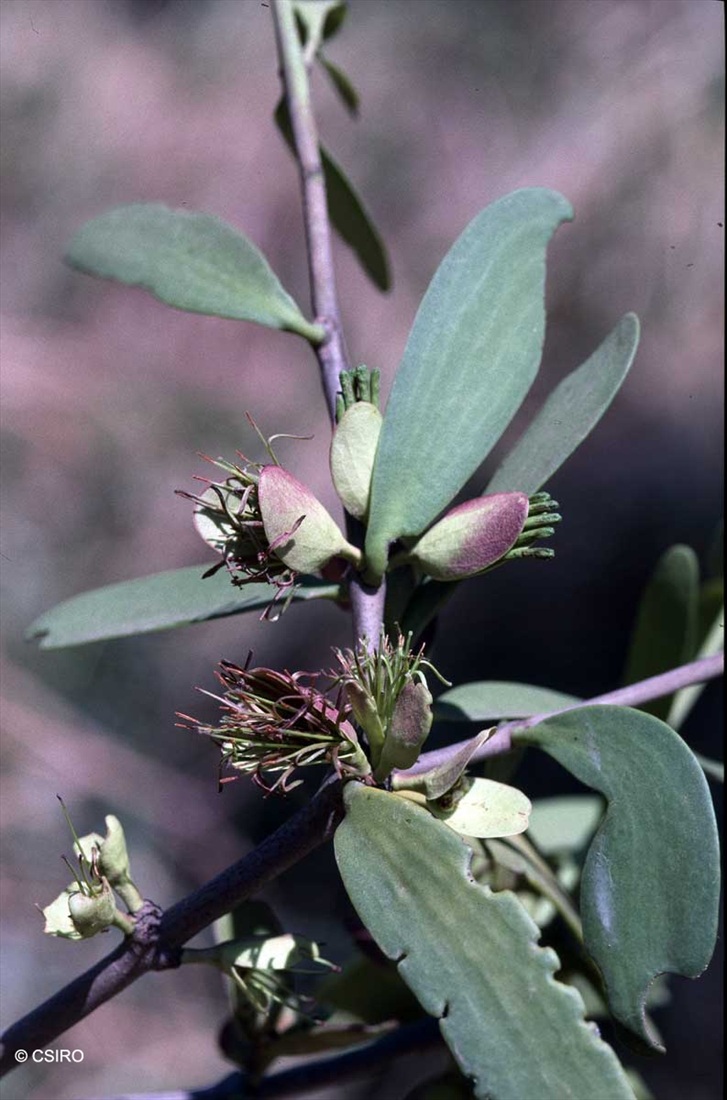Australian Tropical Rainforest Plants - Online edition
Diplatia tomentosa Barlow




Barlow, B.A. (1966) Australian J. Botany 14: 488. Type: Queensland, near Rocky Point, 22 May 1964, B.A. Barlow 753; Holo: AD; Iso: BRI.
Leaf blades thick and brittle, cracking along a straight line when bent back on themselves. Leaf blades about 8.5-12.5 x 2-3 cm, petioles about 0.3-1 cm long. Leaf blades 5-(-7) veined, the venation not obvious in mature leaf blades but generally visible in young leaf blades.
Inflorescence consists of a pedunculate head of two sessile triads enclosed by two large foliaceous bracts, each bract about 20-30 x 16-21 mm. Peduncle about 5-8 mm long. Free calyx about 0.5 mm long, irregularly lobed. Corolla about 25-32 mm long. Anthers about 3-3.5 mm long, staminal filaments about 5-6 mm long. Disk fleshy, surrounding the base of the style. Ovary about 1.5 mm long, densely clothed in white hairs. Style about 25-29 mm long.
Clusters of fruits enclosed in large leafy bracts about 20-30 x 16-20 mm. Fruits clothed in hairs, each fruit about 10-12 x 8 mm with the calyx remnants (about 2 mm long) persistent at the apex. Seeds immersed in a sticky, transparent mucilage. Seeds about 7-8 x 5-6 mm with 5 branched longitudinal stripes visible on the surface. Endosperm pale green. Embryo darker green and about 5 mm long. Cotyledons difficult to distinguish, +/- fused together, about 3 mm long. Cotyledons slightly wider than the radicle.
Features not available.
Endemic to Queensland. Occurs in CYP and NEQ. Altitudinal range from near sea level to 600 m. Commonly found as a parasite of Melaleuca spp. in open forest and on rain forest margins.
Food plant for the larval stage of the Narcissus Blue and Sapphire Azure Butterflies. Braby, M. (2000).





